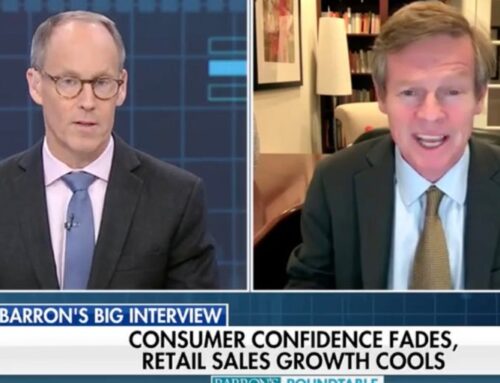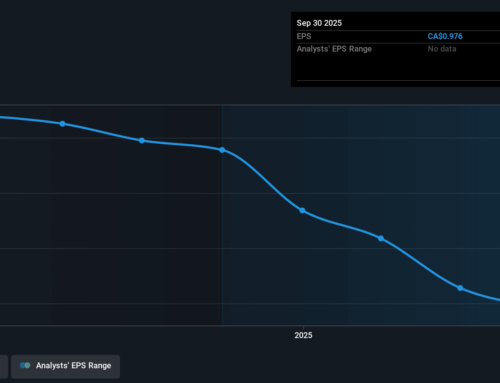Why Grocery Is Still A Winning Bet For Retailers And Investors
April 2, 2025
Grocery remains one of the most resilient and high-performing sectors in retail. But as shoppers navigate rising costs, they aren’t spending less on groceries — they’re shopping smarter.
Consumers are visiting multiple grocers to compare prices, prioritizing private-label brands, and gravitating toward discount and specialty retailers. At the same time, foot traffic at grocery stores continues to rise and grocery-anchored retail centers are seeing record-low vacancy rates. Investors have also taken notice, as they remain bullish on the sector’s long-term stability.
With retail space at a premium and grocers refining their strategies, the next phase of grocery will be defined by discounters, omnichannel expansion, and grocers competing more aggressively for share of wallet as restaurants continue to see increased spending.
Consumers are shopping differently—but they aren’t shopping less
For the past three years, the gap between food at home (grocery) and food away from home (restaurants) spending has widened. In 2024, U.S. consumers spent $21 billion more on food away from home than on groceries — six times the gap recorded in January 2022, according to JLL’s Grocery Report 2025.
Yet grocery foot traffic continues to rise. Store visits reached 17.2 billion in 2024, up 10.9% from 2019. The shift isn’t about grocery losing market share—it’s about how consumers are prioritizing value and efficiency. Shoppers are making faster trips, spending less time per visit, and frequenting multiple grocers to compare prices. The biggest winners? Discount and specialty grocers.
- Aldi has dominated growth for two years straight, opening 105 new stores in 2024 and adding over 2.3 million square feet.
- Grocery Outlet is expanding aggressively, increasing its foot traffic by nearly 49% since 2019.
- Regional chains like Publix and H-E-B are scaling up, strengthening their presence in the South.
Consumers are looking for lower prices, unique selections, and convenience — all of which are reshaping competitive dynamics in the industry.
Retail space constraints are reshaping grocery expansion
Grocery demand remains high, but securing prime retail locations is becoming increasingly difficult. Grocery-anchored shopping centers are experiencing historically low vacancy rates of 3.5%, making it harder for expanding chains to find the right space. With new construction levels at a near standstill, available retail inventory is tightening, fueling a 3.1% year-over-year increase in rents — the highest of any retail subtype.
For grocers looking to expand, competition for high-traffic locations is fierce — driving many retailers to explore alternative strategies. Some are pivoting to smaller-format stores, while others are acquiring existing locations or expanding through mergers and acquisitions. At the same time, investors are doubling down on grocery-anchored retail, fueling record-high transaction volumes.
Grocery-anchored real estate remains an investor favorite
Investment in grocery-anchored centers reached $7.0 billion in 2024, surpassing 2023 levels. Despite capital market challenges, demand for grocery retail remains steady, attracting both private investors and REITs.
Retail landlords, particularly those with grocery-anchored centers, are benefiting from high tenant demand and stable long-term leases. But grocers themselves are increasingly becoming investors, acquiring retail real estate to strengthen control over their long-term footprint. With limited new retail development, grocery-anchored centers remain among the most sought-after assets in commercial real estate.
E-commerce is expanding, but in-store shopping still dominates
Online grocery sales exceeded $200 billion in 2024, but digital convenience hasn’t replaced in-store shopping. Instead, consumers are blending online and offline experiences, searching for deals online while still visiting physical stores for fresh selections and in-person price comparisons.
At the same time, Supplemental Nutrition Assistance Program (SNAP) accessibility is reshaping grocery delivery. More than 41.7 million Americans (12% of the U.S. population) can now use SNAP benefits for grocery delivery, expanding grocers’ customer base. Retailers are also investing in digital engagement, leveraging retail media networks and targeted advertising to reach customers both in-store and online.
What’s next for grocery retail
As grocers compete for consumer dollars, several trends are shaping the industry’s next phase:
- Private-label brands are booming. Sales hit $270 billion in 2024, now representing 20% of total grocery purchases.
- Mergers and acquisitions are ramping up. Aldi, Grocery Outlet, and Amazon Fresh are all expanding through acquisitions and new store openings.
- Grocery and restaurants are in direct competition for consumer dollars. Spending on food away from home continues to outpace food at home. Grocers are responding by expanding their grab-and-go meal offerings, investing in affordable ready-to-eat solutions, and introducing delivery options to compete with restaurant takeout.
- Regional expansion is accelerating. Publix, H-E-B, and other chains are rapidly growing in the South, while Canadian grocers are scaling up private-label and discount formats.
Grocery isn’t just holding steady — it’s evolving. As shifting consumer behaviors reshape the landscape, the most adaptable grocers will lead the way, capturing market share and redefining what convenience, value, and experience mean for today’s shoppers.
With discounters, national grocers, and specialty retailers all competing for the same consumer dollar, the industry is at an inflection point. Grocery will continue to thrive, but success will belong to those who anticipate shopper needs, invest in the right mix of in-store and digital, and carve out a distinct brand identity.
For investors, landlords, and retailers, grocery remains one of the most dynamic sectors in retail. The rules are still being written, and those that move first will define what’s next.
Search
RECENT PRESS RELEASES
Related Post



